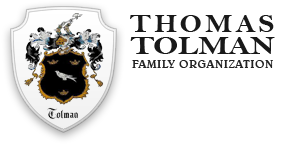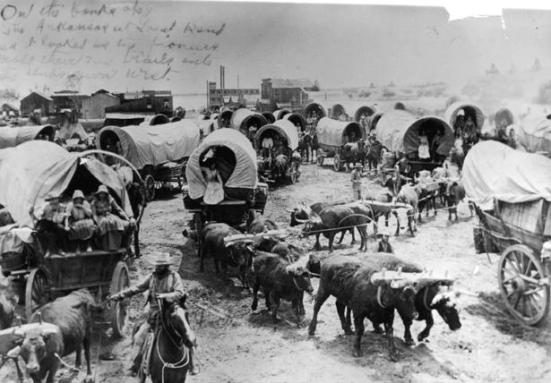What do we know of the company of which Judson and Sarah Lucretia Tolman were members during the late spring and summer of 1848? The “Journal History of the Church” records the following details: Judson and Sarah Lucretia Holbrook Tolman were members of Lorenzo Snow’s Third Company of Brigham Young’s Company that left Winter Quarters in 1848. They left the Elkhorn River on June 1 and arrived in Salt Lake City September 20, having spent one hundred twelve days on the journey. The company consisted of 1,229 souls, 397 wagons, 74 horses, 19 mules, 1,275 oxen (a ratio of more than ten oxen for every horse on the company), 699 cows, 184 loose cattle, 411 sheep, 141 pigs, 605 chickens, 37 cats 82 dogs, 3 goats, 10 geese, 2 hives of bees, 8 doves and 1 crow.
Having arrived in Salt Lake City late in September, there was no time for the members of this company to plant crops in 1848, nor was there time to build “proper” dwellings. Alice Leone Patterson Wilkinson, a granddaughter of Judson and Zibiah Jane Stoker, describes that first Winter:
Judson Tolman’s first home here was a little dugout in the Ninth Ward. A great many hardships had to be borne that winter on account of the scarcity of crops. They were obliged to live for six weeks on nothing but wild onions and milk. The next year, the crops were very successful. From one peck of seed received from the pioneers, he raised twenty-five bushels of potatoes. About the first of July the first barley was ripe and they ground it and made bread, the first they had had for a long time. (Reprinted from Tolman and Tolman, A Brief History of the Life of Judson Tolman, p. 28 (Because a copy of the History in question has not been located).
In the Daughters of the Utah Pioneers Museum in Salt Lake City there is a pioneer map showing the distribution of farm lots in the Plat A portion of the Big Field Survey of Great Salt Lake City. The lots were to be five acres each, 46 rods by 17.4 rods (a rod is 5-1/2 yards). The map explanation gives the following: “Under date of Wednesday, September 28, 1848, after the return of Brigham Young from Winter Quarters, a meeting of pioneers was held and it was mutually agreed that under the Big Field Survey each person would be entitled to as many lots in that area as he could farm successfully the following year (1849) and that the location of their respective lots would be determined by drawing.” Judson was assigned a lot on the north east corner of 3rd East and 13th South, next to his father-in-law’s brother, Chandler Holbrook. Joseph was assigned two lots on the west side of 2nd West between 17th and 21st South. (Map on file at the Daughters of the Utah Pioneers Museum, Salt Lake City, Utah. Map compiled and copyrighted by Nicholas G. Morgan.)
At that time, the boundaries of the Ninth Ward were 3rd to 6th South between 3rd and 6th East. The assigned farm lots were south of the organized wards and undoubtedly were part of the land which was farmed in 1849 as described in Joseph Holbrooks’s journal quoted on pages thirty-five and thirty-six of this history. Joseph did not mention Judson by name when writing about the crops, but probably the “we” meant he and Judson were still working together. In early September, 1849, Brigham Young sent the first families to the Tooele Valley, some twenty miles southwest of Salt Lake City. Judson Tolman, his wife, Sarah Lucretia, and their 19-month-old daughter Nancy responded to that assignment, along with Josiah Call, his wife and infant child, and Samuel Mecham and his wife. Traveling together, the three families explored the valley, the surrounding canyons and the mountains, and decided to settle on a small stream south of the current city of Tooele. (Mercer, Mildred Allred, ed., History of Tooele County. Salt Lake City, Publishers’ Press, 1961, p. 19.)
Judson attended October Conference in Salt Lake City less than one month after arriving in Tooele. Joseph Holbrook notes: “In the fall Month Oct. I settled with JudsonTolman my son in law who had been with me from Nauvoo until now his wife living in the family and we doing our work together as one man he had a good new two horse waggon & harness two good yoke of Oxen two cows & bread stuff enough for one year together with about two hundred (dolls) in Cash which gave him a good start in the valley for a Young man to begin with.” (Journal of Joseph Holbrook, page 149). While there (conference), he (Judson) reportedly asked Brigham Young to send additional settlers to the Tooele area. As a result of that request, Judson’s two brothers, Cyrus—with his wife and two children—and Benjamin Hewitt, as yet unmarried, arrived in Tooele in November 1849. There are still Tolmans living in Tooele County who are descendants of Cyrus.
Editorial Note
(This entry in Joseph Holbrook’s journal is significant, because it represents the “coming of age,” if you will, and the formal separation of the households—Judson and Sarah, for the first time in their married lives, establishing their own home and separating their family from the patriarchal presence of the Holbrooks.
A very interesting story ensued from Cyrus’ early experience in Tooele. President Brigham Young had sent an exploration party to the mountains both east and west of Tooele to determine if there was suitable saw and shingle timber for construction. That party apparently reported to President Young that very little such timber existed in the Tooele area. Soon afterward, Cyrus was in Salt Lake City to meet with President Young and, during that meeting, contradicted the report of the exploration party. He reported that there was considerable saw and shingle timber in the canyons and promised to deliver a load of it to Salt Lake City. That contract was filled a few days later with the delivery of a load of Tooele timber to Brigham Young.
James Dunn wrote the following account of the settler’s first Christmas in Tooele:
“When the children of Tooele awoke on Christmas morning in 1849, not a doll or a toy was in all the land. Not even a stick of candy or an apple was found in any of the cabins. But the children and their parents were happy for all that; for they were glad they still had a little to eat, and prospects before them in their new homes were beginning to grow brighter every day. But, if there were no dolls or toys for the children, the fathers and mothers did not forget Christmas, and before the day was over they had a real jolly good time.”
“In the evening they all met at the cabin of John Rowberry—that was the house they held all their meetings in—and there they had a good old-fashioned dance to wind up the day with. It was the merriest crowd that ever met in a Christmas gathering for they were all young men and women, and as full of fun and frolic as it was possible for young married people to be. Some of them were very good dancers, and a few were good singers, and they could get up an interesting party whenever they took the notion for amusement.”
“Now let us see who was at their first Christmas party that was held in this city: John Rowberry, wife and five children; Cyrus Tolman, wife and two children; Judson Tolman, wife and one child; Josiah Call, wife and one child; Captain (Phineas) Wright, wife and one boy; Samuel Mecham and wife; Mr. Bravett, wife and five children; Benjamin Tolman and Robert Skielton.”
So you see there were enough parents and children to fill John Rowberry’s house for a good Christmas shake down. But the great drawback was music. Not a musical instrument of any kind was owned in the valley but Si Call was a very good whistler and he whistled the tunes while the merry pioneers danced to the music. We cannot tell you who called the numbers that evening, it was probably Si Call himself who both whistled and called, as he is reported to have been a very genius in that line. But the dancers had a good time until just before midnight, when the dance broke up, and that was the end of the first Christmas party that was held in this city or county.” (Dunn, James, published in Tooele Transcript (newspaper), December 26, 1902.)
(There are various accounts of the first Christmas held at Bishop Rowberry’s. Some pioneer accounts record that Josiah Call was a good whistler and whistled tunes while the pioneers danced, and other accounts, found among the Daughters of the Utah Pioneers, state that Cyrus Tolman was a gifted whistler and provided the music for the dances. (See also accounts in History of Tooele County and “Tooele, Utah, Stake History, 1847-1900.” (Dunn, James, published in Tooele Transcript (newspaper), December 26, 1902.)
Judson wrote in the early 1900s: “I helped to fight the crickets in 1849 and that year, together with two other families, settled in Toelle [Tooele] valley, where Tooele City now stands. We were the first three families to settle in that valley. In 18501 was one of a company of thirty-one called by Gov. Brigham Young to serve as a guard on the southwestern frontiers of Utah, under Captain Phineas R. White. I served three and one-half years in that Capacity and was in three battles with the Indians, wherein sixteen Indians and one white man was killed. In 1852 the Indians took the last yoke of oxen and the last cow I had. In the fall of 1854 I moved to Bountiful, Davis county, where I lived ever since. I might add that I helped to herd Uncle Sam’s army in the Echo Canyon war. In September, 1877,1 was sent on a mission to the State of Maine. In 1885 I was ordained a High Priest, and in 1897 a Patriarch.” (Jenson, Andrew Latter-Day Saint Biographical Encyclopedia, Vol. II, 1914. Reprinted in 1971 by Western Epics, Salt Lake City, Utah. It is estimated this article was written by Judson in about 1908/1909).
See Mormon Pioneer Overland Travel website for records for Judson Tolman and Sarah Lucretia Holbrook Tolman.
(Contributed by the Thomas Tolman Family Organization. Excerpt from Judson Tolman: Pioneer, Lumberman, Patriarch by E. Dennis Tolman, Second Edition, 2004, pages 36-40.)


